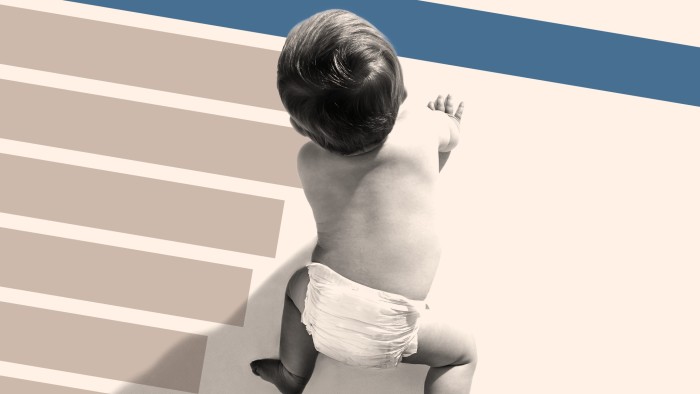Mothers in London are more likely to have children later on in life than elsewhere in England and Wales, as more people delay parenthood to establish careers while navigating high housing costs, say analysts.
Like many advanced and developed economies, Britain is experiencing a fast decline in birth rates as the average age of mothers rises.
But the trend is particularly stark in London where the birth rate for women aged between 40 and 44 years beats all the other regions by some margin.
In 2023, it stood at 20.9 children per 1,000 women, despite falling back slightly in the previous two years.
The figure is more than double the rate in the North East, the area with the lowest fertility rate among this age group. The average across England and Wales for over 40s that year was 14.9.
“Fertility rates are lower in areas such as London where housing costs are high and accommodation types less suited to families,” said Ann Berrington, professor of demography at the University of Southampton.
“It is not surprising then that London has a very late pattern of childbearing,” she added.
The city’s large student population, which depresses the overall birth rate, was also driving the trend.
“The patterns in part reflect the ‘life course’ stage,” according to Berrington. “Many young adults move to major urban areas for work and then move away at later ages when they are more established in a career and want to start a family.”
Babies numbers have been closely watched as they affect the health of the economy in the face of an ageing population. Without immigration, falling birth rates add pressure on public finances and limit economic growth.
Birth rates have been falling faster in London than in the rest of the country since the 2000s. This has contributed to the capital ageing between 2011 and 2023, in contrast with the trend in other cities, according to an analysis published on Wednesday by the Resolution Foundation think-tank.
The shift has been underpinned by the UK’s departure from the EU, which triggered an increase in international immigration outside the capital, the research found.
“Changing immigration flows since Brexit, combined with falling birth rates from a ‘baby bust’ steeper than the national average, have worked together to age the capital over the past decade,” said Nye Cominetti, principal economist at the Resolution Foundation.
While London is an outlier for having more older mums per population, its overall fertility rate is the lowest in the country, as younger women in the capital have fewer children than elsewhere.
The fertility rate for London was 1.35 children per woman in 2023, according to the latest data published in October, down from 1.7 in 2013 and the joint lowest with the South East.
This has resulted in a sharp decline in the number of children being born. The number of births in London fell 19 per cent in the decade to 2023 — a larger drop than the 14.6 per cent decrease in the rest of England and Wales, according to official data.
Nine of the 10 areas with the sharpest decline in primary school-age children between 2016 and 2023 were in inner London, according to the Resolution Foundation.
Analysts point to eye-watering London house prices as a key factor. Full-time employees in the capital spend about 12 times their annual earnings buying a home — far higher than any region and more than double two decades ago.
Willem Adema, senior economist at the OECD, an international group that promotes economic growth, said housing was “a very big barrier to having children”.
However, he also noted that IVF clinics, which tend to be in larger urban centres serving a wealthier and older clientele, had helped to support higher birth rates among older mothers.
London has more fertility clinics approved by the industry regulator than anywhere else in the country, according to the Human, Fertilisation and Embryology Authority.
The UK’s fertility rate has fallen from above average in a group of 38 mostly wealthy countries in the 2010s to below it in 2021, according to OECD data.
It follows other traditionally higher fertility countries, such as Finland and Norway, that have converged towards the rates of low fertility countries, such as Italy and Spain, which has puzzled demographers in recent years.
In 2023, the birth rate in England and Wales plunged to 1.44 children per woman, the lowest since records began in 1938, according to official statistics.
In addition to economic factors such as costs to start a family, changes in attitudes are also at play, including millennials not feeling ready or not having found a suitable partner to have children with, as cited in research by the UCL Centre for Longitudinal Studies.
The report also found that only a quarter of UK millennials, those born between 1981 and 1996, who want children are trying for them.
Wolfgang Lutz, founding director of the Wittgenstein Centre for Demography and Global Human Capital in Vienna, said the country’s fertility trends, which are similar to those seen in other parts of Europe, America and Asia, reflected “a massive postponement of childbearing”.
“Women are having kids at a later age because there are many things they want to do before starting a family,” he added. But “some children will not be born for personal or biological reasons”.






